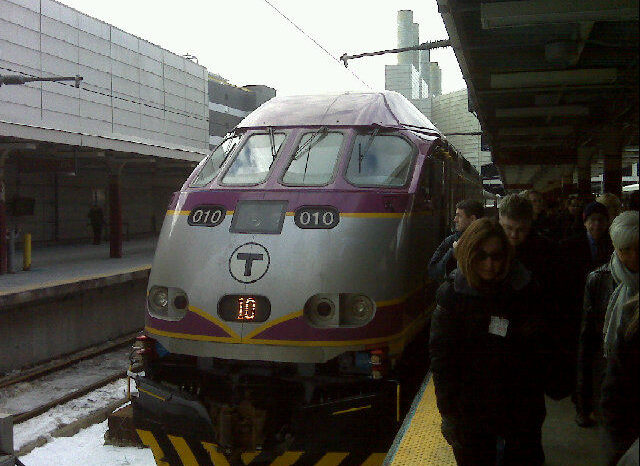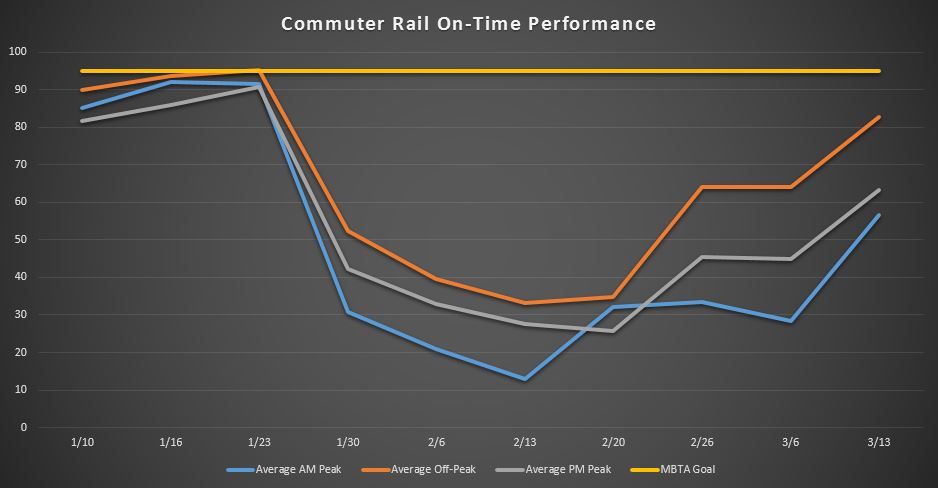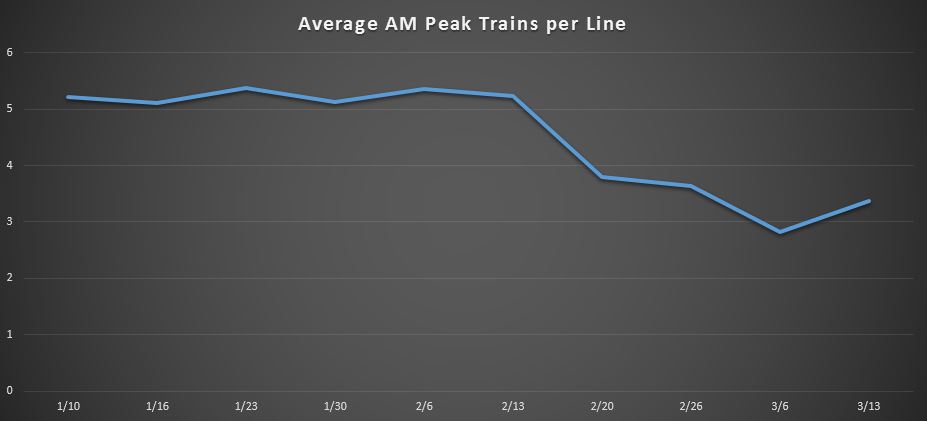When Will Commuter Rail Return to Full Service?
March 30th can’t come soon enough for commuter rail riders, though Keolis may dread the date’s arrival. This is when the commuter rail operator promises to finally return to normal service levels, weeks after the blizzards of February.
Keolis continues to face an uphill battle as their latest on-time performance statistics leave much to be desired. Trains during peak commuting hours were only on time about 60 percent of the time during the week ending on March 13, with some individual lines scoring below 10 percent.
While this is somehow a major improvement over the previous week’s performance, it is still unacceptable to the thousands who rely on the trains to make a living.
Looking further into the reports reveals that service levels are still operating well below normal capacity. The average line has about 5.2 trains scheduled each morning. This winter the average dropped as low as 2.8, with the most recent report putting the figure at 3.4.
While there has been some improvement as of late, Keolis is struggling not only to provide an adequate quantity of trains with the appropriate number of cars, but their on-time performance also points to continuing quality issues.
Whether they can conquer these challenges by their self-imposed deadline of March 30th remains a question mark.
While contractual fines pile up for the commuter rail operator for a multitude of reasons, one infraction isn’t getting as much attention, except from passengers. Keolis is supposed to be fined $500 each time they fail to check for tickets, a practice that has become widespread on congested trains transporting as much as double their typical capacity.
A commuter rail monthly pass can cost as much as $362. Riders have already been subjected to subpar performance, but watching fellow travelers ride for free is like salt in their wounds. A free fare day in April and discounts in May hardly make up for these unfair lapses.
With the cacophony of problems currently racking the commuter rail it’s easy to forget about its cousin, the MBTA’s subway system. The MBTA announced that the subway has returned to full service, though we have little data on its performance from the past two months to prove it.
With the new year came a new MBTA performance reporting system, one which no longer offers regular subway system data to the public.
The T’s performance on the Orange Line, which I can personally attest to, has made incredible strides over the last two weeks. Five-minute waits are once again the rush-hour norm, a thankful departure from the crowded and lengthy waits on the frozen platforms of February.
Without hard data it’s impossible to quantify exactly what impact the winter weather had on the city’s subway system. In the past the T has typically scored around 90 percent for on-time performance, just short of their goal of 95 percent.
As the subway returns to the status quo, the commuter rail has miles to go yet. With persistent worries about both the number of trains and timeliness, two weeks until full service seems highly optimistic but not impossible. I’m keeping my fingers crossed.





